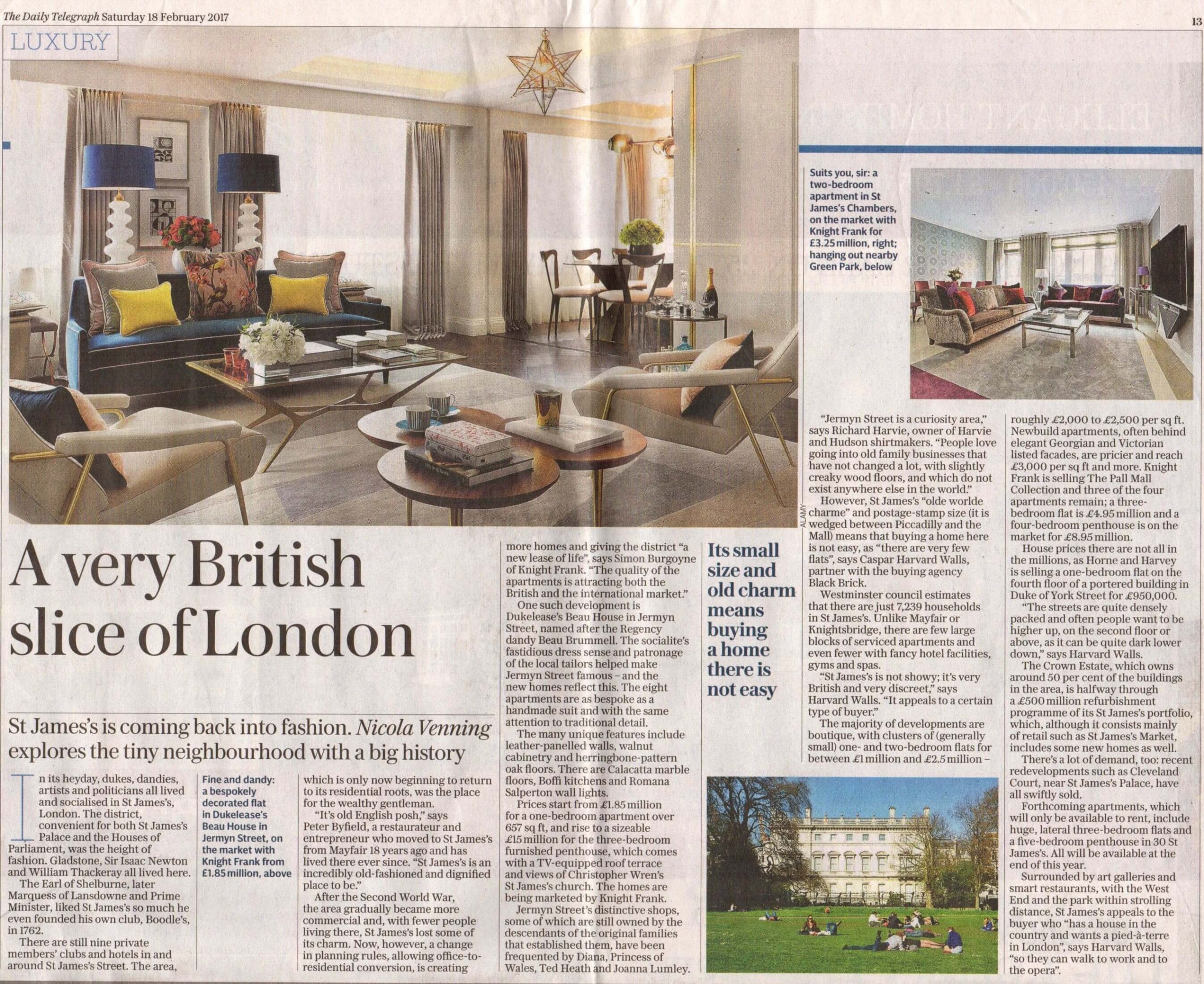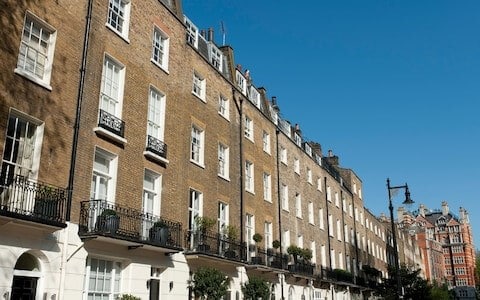Where to buy for wild swimming, rowing and fishing on your doorstep
All aboard: Olympic Rower Ben Hunt-Davis and his family’s nautically themed London apartment CREDIT:DAVID ROSE
By Nicola Venning
30th October 2017, 6am
Having a home near the water has always been important to Ben Hunt-Davis. The Olympic rowing champion, who won gold at Sydney in 2000, currently lives in a five-bedroom apartment moments from the Thames in Barnes, south-west London, with his wife, Isabella, teenage daughters, Sofia and Julia, and younger son, Luca. Living in this corner of Barnes has given Hunt-Davis year-round access to the Thames from nearby Hammersmith Bridge. “I have a kayak in my garden and can take it down to the river whenever I want. My daughters currently row and I often go out with them.” The family’s top-floor apartment, which has a vast open-plan kitchen/living room with a high vaulted ceiling, a roof terrace and a communal garden, is on the market for £1.65 million with Carter Jonas.
You don’t need to be an Olympic rowing champion to enjoy an active riverside lifestyle. Living by the water’s edge, or at least near it, allows residents to dip their toes into all sorts of water-based activities that can be enjoyed year-round.
He is planning to upgrade to a house and stresses that it will, once again, be near the river. “I love being close to the water, having spent a lot of time on it,” says Hunt-Davis, who co-founded the performance consultancy Will It Make The Boat Go Faster? and works as a motivational speaker. “You get an amazing sense of space.”
Living in this corner of Barnes has given Hunt-Davis year-round access to the Thames from nearby Hammersmith Bridge. “I have a kayak in my garden and can take it down to the river whenever I want. My daughters currently row and I often go out with them.” The family’s top-floor apartment, which has a vast open-plan kitchen/living room with a high vaulted ceiling, a roof terrace and a communal garden, is on the market for £1.65 million with Carter Jonas.
You don’t need to be an Olympic rowing champion to enjoy an active riverside lifestyle. Living by the water’s edge, or at least near it, allows residents to dip their toes into all sorts of water-based activities that can be enjoyed year-round.
“There is an absolute attraction to being by the water and buyers have always loved living next to a river or the sea,” says Ed Heaton, founder of Heaton & Partners, a buying agency based in London and Newbury. He regularly receives inquiries from buyers looking for homes with a mooring. Fishing rights are also “much coveted”, he adds. “The opportunity to step out of your back door and cast a fly over a resting trout is one most fishermen can only dream about.”
A niche but growing area is wild water swimming – whatever the weather. “I’ve come across a few homes where the owners like to swim in their lake every day,” says Heaton. Such water babies might be tempted by Howells Barn, a five-bedroom converted Cotswold stone barn within the 550-acre Lower Mill Estate Nature Reserve near the Gloucestershire village of Somerford Keynes. The house (one of just two on the estate that can be bought as a principal private residence) comes with a swimming pool as well as access to a large lagoon – perfect for that early morning dip. There is also an airy lakeside cabin, should you need a rest afterwards. It’s on the market with Knight Frank for £1.95 million.
Splashing out to splash about doesn’t come cheap. Premium homes – those with a price tag of £2 million or more – on the waterfront tend to be 81 per cent more expensive than a neighbouring property without a river or sea view.
Splashing out to splash about doesn’t come cheap. Premium homes – those with a price tag of £2 million or more – on the waterfront tend to be 81 per cent more expensive than a neighbouring property without a river or sea view, according to Knight Frank.
Even the risk of flooding, which would deter most buyers, is overlooked in particularly desirable areas such as Henley-on-Thames in Oxfordshire and Marlow in Buckinghamshire, where “a buyer will still pay a premium,” says Heaton.
Such is the demand that in London, tens of thousands of homes have been created along the 27-mile stretch of the Thames. “The river was a very undeveloped area and there was a lot of land available to build on,” says Caspar Harvard-Walls, a partner at Black Brick buying agency. “And there is something iconic about living over the Thames.”
Not that riverside living is one big regatta. Overbuilding and a lack of transport have led prices to dip on some waterfront developments, while some schemes “can feel quite soulless if the developer has not allowed for commercial space such as cafés and restaurants,” says Harvard-Walls.
One development that will benefit from both transport facilities and social amenities is Royal Docks West, a new apartment block from Mount Anvil in east London, between the O2 Arena and ExCeL London. The 19-floor tower – one of many regeneration projects in the area – has 105 homes ranging from studios to three-bedroom flats. It is moments from Royal Victoria DLR station and not much further from Custom House station, where Crossrail is due to begin next December.
And, of course, Royal Docks West is next to an inlet of the Thames, where locals can enjoy a small beach as well as rowing, kayaking, open-water swimming and even wakeboarding. Serious water enthusiasts can catch the Emirates Air Line cable car over the river and then jump on the river bus to work.
“Rather than sit on a hot, stuffy Tube,” Heaton says, “it is so much nicer to go up the river.”





By Isabelle Fraser